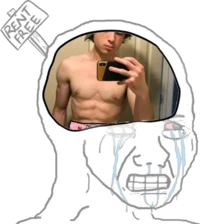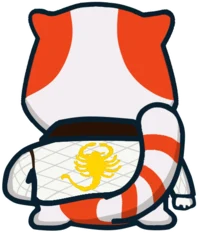Hello. Today, I wanted to discuss the origins of psychedelic writing in Europe. I happen to know about this topic due to my heavy interest in drugs. I hope you enjoy it. I can't sleep, so I thought I'd write instead of cutting myself.
In the Beginning...
Michael Boon, in The Road of Excess: A History of Writers on Drugs, investigates the relationship between drugs and writing in the literary canon. He claims that European literary history before Thomas De Quincey “is generally considered a drug-free zone”. Boon posits a contrary theory and argues that drug-inspired writing can be found in works as ancient as Comus (1637) and Paradise Lost (1667).
How could these texts be considered psychedelic? Comus is a 17th-century masque that “tells a tale about the dangers of taking a walk in the woods”. It features a sprite named Comus who attempts to seduce a virginal nymph named Sabrina as she wanders the woods. Comus offers Sabrina a drink, claiming that “one sip of this/Will bathe the swooping spirits in delight/Beyond the bliss of dreams”. Paradise Lost is an epic poem that retells the Biblical story of Adam and Eve. Boon notes that the tree of knowledge described in the poem bears fruits that offer what he calls “gnosis – knowledge of the divine”. After Adam and Eve have eaten the forbidden fruit, God sends the archangel Michael to give Adam a vision of the future of humankind. This is done using plants, namely “euphrasy and rue”. According to Boon, in both Comus and Paradise Lost, Milton is referring to psychoactive substances that have “many of the same qualities we attribute to hashish or LSD”, and rue may be another name for the aforementioned Peganum harmala plant.
Boon argues that several plants in Renaissance literature could be considered psychoactive and that “love potions, poisons, mythical philtres and brews, powerful herbs, magical stones, and secret powders” all play the role of “mediating the space between the imagination, with its vectors of desire, intoxication, death and truth, and the material world”. This is true for the aforementioned Pantagruelion plant which can be considered an “allegorical plant, half-real, half-myth” and is “strongly linked to the history of cannabis”.
Marijuana
Cannabis also appears in early European psychedelic literature. As Boon points out, there is little information regarding “actual cannabis use in Renaissance Europe, although there are references to the psychoactive properties of the plant in writings about witchcraft in travellers' accounts”. According to Boon, “the earliest account of cannabis intoxication to appear in Europe was that of a Moroccan Christian convert named Leo Africanus” in 1510. Africanus travelled great swaths of Africa and wrote about it in his text Descrittione dell'Africa which means ‘Description of Africa'. In this text, he describes his experiences with hashish in Tunisia and claims that anyone who eats “but one ounce falleth a laughing, disporting, and dallying, as if he were half-drunken”. Succeeding Africanus is Rabelais who dedicated three chapters of Gargantua and Pantagruel to a plant called “Pantagruelion”. Boon claims it can be argued that these chapters were a “homage to the psychoactive properties of the good weed” and that “there is little doubt that Pantagruelion is the cannabis plant”.
The tradition of cannabis-inspired writing in Europe is continued by many other writers, including Walter Benjamin who was a German philosopher and essayist who also experimented with hashish. He took the drug for the first time in December 1927, along with Ernst Joël and Fritz Fränkel who were both Berlin doctors. Benjamin wrote an essay titled “Hashish in Marseilles”, in which he details his own subjective experiences with the drug. His descriptions demonstrate that the effects of hashish are not unlike those described by other psychedelically inspired literature. He notes cannabis's effects on consciousness, writing that it produces a “continual alternation of dreaming and waking states, a constant and finally exhausting oscillation between totally different worlds of consciousness”. Benjamin also describes changes in perception and claims that “colours grow brighter, more luminous; objects more beautiful, or else lumpy and threatening…”. States of mild dissociation also occur. As Benjamin explains, one knows one is under the influence of hashish when “his laughter, all his utterances, happen to him like external events”. Benjamin also claims that hashish raises one's sense of humour and situations “can become so compulsively hilarious that the hashish eater for minutes on end is capable of nothing except laughing”. Despite all the effects of hashish, “the memory of the intoxication is surprisingly clear”.
Peyote
Another drug featured in European psychedelic literature is mescaline, which can be derived from several types of cacti, including the peyote cactus and the San Pedro cactus. The drug is mostly associated with Native American tribes and, as such, makes a larger impact on American psychedelic literature. The psychedelic effects of certain cacti have been known by Native Americans for centuries, and archaeological investigations have dated the use of mescaline by indigenous people as far back as “8500 BC”. Some of the earliest reports of peyote use among Native Americans can be found in “Spanish missionary records dating to the late 1600s and early 1700s”. For many centuries, “North American Indians used mescaline as a medicine, amulets and hallucinogenic religious sacrament”. In modern times, mescaline is still used by Native Americans, as seen with the Native American Church (NAC) which has a peyote ritual performed for “individuals to access certain cognitive structures and mechanisms within their brains that effectively expand consciousness, resulting in physical, mental, and spiritual benefits”. The psychic effects of mescaline are not unlike those reported from other common psychedelics such as LSD and psilocybin and include “various distortions, involving sensory perception, space, time, colour, sounds, and shapes, as well as dreamlike feeling[s]”.
Peyote found its way into the hands of European writers such as British psychologist Havelock Ellis who obtained some in 1897, did self-experimentation, and shared it with both William Butler Yeats and Arthur Symons. Scientific research that emerges from Europe struggles to maintain a firm delineation between the subjective and the objective, and the language used to describe the effects of peyote dips into the fantastical. Hence, “in describing mental states produced by mescaline, researchers searched for analogies in religious experience or literature”.
The German solider Ernst Junger speaks at length about mescaline. During his discussions, the inability of scientific language to entirely encapsulate the psychedelic experience reveals itself, and Jünger increasingly relies on figurative language that leans towards being more mystical than scientific. He notes the profound psychedelic effects of the drug, writing that it produces “an effect that is more brutal and demanding than the effect of the opiates; they transport the user not just to the visionary world and its palaces, but also bring him down into the depths of the subterranean crypts”. Outlining the differences between mescaline and other drugs, he demonstrates his reliance on figurative language once again when he claims that “stimulants and narcotics modify time: they expand it or accelerate it. But with mescaline the earth is cloven; the creative power of time returns to the origins”. He also describes his experimentation with mescaline in Stuttgart during January 1950. After consuming mescaline, he “could not write down even one word” and spent “about an hour experiencing mild nausea”. Soon after, the mind-altering effects ensued. Jünger was “immersed in visions, meditations, visual and auditory perceptions of images and compositions, until six in the evening”.
LSD
Jünger was a close friend of Albert Hoffmann who was a Swiss chemist who synthesized LSD. This drug is widely believed to be “one of the most powerful psychoactive drugs known” due to its ability to produce intense effects at exceptionally low doses. Hoffman synthesized LSD “by chemical cleavage of some other ergot alkaloid”, namely ergotamine. Ergot is “produced by a lower fungus (Claviceps purpurea) that grows parasitically on rye and, to a lesser extent, on other species of grain and on wild grasses”. Once synthesized, LSD is a substance that is “odourless, colourless, and tasteless”.
Hoffmann and Jünger experimented with LSD together, and their psychonautic experiences are recorded in Hoffmann's text LSD: My Problem Child. When Hoffmann describes his experiences, he uses the language of fantasy and surrealism that has appeared in the previously discussed psychedelic texts. This is seen primarily with the use of colour, light, and the numerous abstract descriptions he provides. For instance, when discussing a time when he ingested LSD with Jünger and his pharmacologist friend Professor Heribert Konzett, Hoffmann describes red-violet roses that “radiated in portentous brightness” and claims that “Ernst Jünger enjoyed the colour display of oriental images”. Furthermore, themes of spirituality, transcendence, and profundity make themselves apparent. He evokes the divine when discussing music, writing that “the concerto for flute and harp by Mozart was perceived in its celestial beauty as heavenly music”. Hoffmann claims that Professor Konzett experienced “a breath of timelessness, liberation from the past and the future, blessedness through being completely here and now” which suggests a transcendence from immediate reality and its temporal constraints.
Hoffmann argues that LSD can unearth memories that are repressed yet, nevertheless, negatively impact one's psyche. Memories brought to one's conscious awareness “may then become accessible to psychotherapeutic treatment”. This view is shared by Grinspoon et al who claim that “forgotten incidents from the remote past may be released from the unconscious and relived” when LSD is consumed. It was also believed that LSD resembled the symptoms of schizophrenia, hence it could be used to better understand mental illness. As such, clinicians were interested in LSD, hoping that the drug would “help them better understand and empathize with their schizophrenic patients”. In contemporary times, the view that LSD is a substance capable of simulating schizophrenia has since been “seriously attacked by many phenomenologically and psychoanalytically oriented psychiatrists”.
Hoffmann also notes that LSD is a potentially invaluable tool for terminally ill patients. One of the potential benefits Hoffmann lists is pain relief. Hoffmann claims that LSD might be used instead of analgesic medication. However, he does admit that psychedelic treatment for pain might only be effective because “patients under the influence of LSD are psychologically so dissociated from their bodies that physical pain no longer penetrates their consciousness”. The second benefit Hoffman notes is LSD's potential to allay terminally ill patients' dread of mortality and allow patients to accept their imminent death. He claims that there are numerous cases of “patients who gained meaningful insights about life and death on their deathbeds, as freed from pain in LSD ecstasy and reconciled to their fate, they faced their earthly demise fearlessly and in peace”. For psychedelic treatment to be effective, Hoffmann suggests that patients “be prepared and instructed about the kind of experiences and transformations that await them”. Hoffmann's views of LSD represent a shift in the understanding of psychedelics. From their locus in a spiritual realm among shamans and religious rituals, they are brought into the clinical setting and integrated into psychoanalysis. As will be seen, this paradigm shift will have a profound impact on psychedelic literature and the usage of psychedelics.
It did not take long for LSD to find popularity as a recreational drug. Hoffmann laments that the “joy at having fathered LSD was tarnished after more than ten years of uninterrupted scientific research and medicinal use when LSD was swept up in the huge wave of an inebriant mania that began to spread over the Western world, above all the United States, at the end of the 1950s”. He argues that the “rapid rise of nonmedicinal LSD consumption at the beginning of the 1960s was also partly attributable to the fact that the drug laws then current in most countries did not include LSD”. The period Hoffmann refers to, which will be discussed in greater detail at a later point in this chapter, saw the explosion of psychedelic art which encompasses “creations produced under the influence of LSD and other psychedelic drugs, whereby the drugs acted as stimulus and source of inspiration”. Psychedelic art was unique because artists were influenced in their creative work in unconventional ways. Mediums affected by the wave of psychedelic art include visual arts, literature as well as music, as is the case with the Beatles, a highly influential English band who were wildly popular in the 1960s and experimented with psychedelic rock.
Conclusion
To do drugs is awfully human and even the brightest intellectuals among us have indulged. Don't feel bad to light one up or pop a tab. Folks far greater than you have done so for centuries.














Jump in the discussion.
No email address required.
Next time just cut yourself 👍
Jump in the discussion.
No email address required.
More options
Context
!druggies first based
based  sneedman post
sneedman post
Jump in the discussion.
No email address required.
More options
Context
European authors and drugs and no Huxley? That's like British rock 'n roll and no Beatles. But I just skimmed your post, will pack a bowl and read it in bed in a few.
Also, what is with the ginormous dumper on Queen Holly in the last photo? Mama.
Jump in the discussion.
No email address required.
More options
Context
"Psychedelics are fine and the best people in the word indulge in them"
- the least mentally stable person you know
Jump in the discussion.
No email address required.
Literally me
me
Jump in the discussion.
No email address required.
More options
Context
More options
Context
I disagree with most of what was written (didn't read it all lol), especially in regards to John Milton's Paradise Lost being "psychedelic". The entire work is so straightforward and the author provides commentary at every turn on how to interpret events. It's a puritan religious work dictated by a blind guy lying in bed.
Philip K Peepee is the only writer who could do psychedelic literature right because he's clearly basing a lot of what he writes on peepeehead drug fiends he lived with. And if you read something like A Scanner Darkly he gives you an (accurate) assessment that they're paranoid annoying losers for the most part and their dramas are petty.
Jump in the discussion.
No email address required.
lol phillip k peepee
Jump in the discussion.
No email address required.
More options
Context
The movie was really good, should I bother with the book or nah?
Jump in the discussion.
No email address required.
More options
Context
More options
Context
Control + F, mushroom, 0 results.
Frick this.
Jump in the discussion.
No email address required.
More options
Context
Jump in the discussion.
No email address required.
More options
Context
Jump in the discussion.
No email address required.
More options
Context